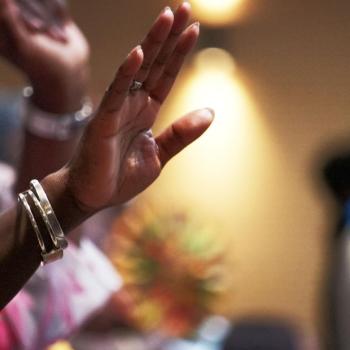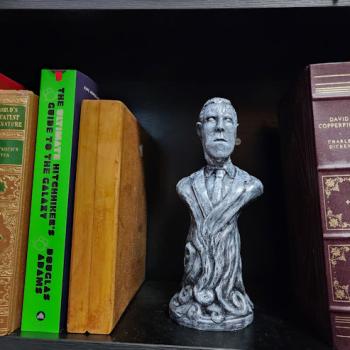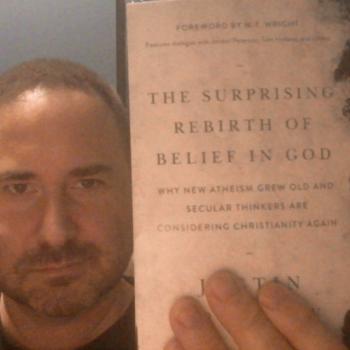
The Divine Precept was a cult which had begun in Korea, attracting thousands of members. It spread to America by way of a very enthusiastic and dedicated evangelist, Miss Yoon-Sook Lee, who attracted a few hundred followers in her early evangelism.
The cult’s leader, Mr. Chang, had had a vision from God in which he learned that God would return to earth in the year 1967, and shape the world into the perfect conditions of Paradise. However, the fatal year of 1967 came and went, and God failed to appear and convert the earth into a second Eden. One would think this would be the end of the cult, but as religious history has shown us, failed prophecies rarely destroy the cult which spread them. Movements adjust to disappointment and form new doctrines to meet the challenges. The same was true of Divine Precept, the doctrines of which began to change, expand, and become able to the task of handling inconsistencies through sheer complexity. Lee eventually proudly described this new, indecipherable web of teachings “mind-blowing.”
However complicated the doctrines were, the basic principles were what one would expect from a standard religion: sharing, loving one another, working for the good of humankind, and community involvement.
One cannot, however, easily evangelize with a tumultuous mess of a message. Lee’s new tactic was to reveal the message in stages, piling doctrine upon doctrine in a logical order to gradually build up to the complexity of the whole.
A New Strategy
In the 1970s it became trendy for youngsters to drop out of Middle-Class life and join new subcultures, movements, communes, and ideologies. This brought a sudden influx of much more affluent and influential converts to fill the pews and expand the movement. Suddenly the cult had resources to make significant advances and changes to its operation.
These advances included media blitzes, rallies, campaigns, lectures, seminars, and high-class events. So rapid was its expansion that Divine Precept became a cultural phenomenon and household name for a brief period in the 70s as everyone was familiar with their media presence. But nothing lasts forever, and as the momentum began to die, another strategy was called for.
The new strategy adopted by Divine Precept was labeled “picking up.” Divine Precept members took to the highways and byways, dives, bars, homeless shelters, and anywhere the disaffected could be found, and begin casual conversations with all who might engage.
In the opposite direction, they also began to erect humble display tables on college campuses, casually engaging students in conversation. The group would also send attractive young women into universities to flirtily invite professors to “science lectures.”
Having befriended the occasional stranger, the missionaries would invite them to dinners or lectures being hosted by the cult. The group was careful not to represent themselves not as a religious organization, but more as an intellectual movement, social club, or philosophical society.
However, when they infiltrated religious groups, they did represent themselves as a Christian organization offering retreats and fellowshipping opportunities to interested youths.
Upon arriving at these dinners and events, the attendee found groups of friendly young people engaging in supportive conversation. Upon arrival, each attendee was covertly assigned a “buddy” to shadow them throughout the event, probe them for interests and concerns, shower them with compliments, and show deep interest in them as a person. The “buddy” was given the assignment to discover “hooks” for their target which the group collected for followup engagement with the targeted individual.
The Farm
The cult had evolved beyond the commune phase, and members carried on with their suburban lives, while still attending sessions and participating in the practices and doctrines of the Divine Precept. However, with the affluence the cult now held, they purchased a segment of land and built a luxurious conference center out of which to operate. This conference center took the ominous name: “The Farm.”
While The Farm held regular retreats, these events were mostly designed to recruit new members. Because of their evangelical purpose, the cult had absolute control of the environment during the retreat. They used this control to implement their tactics.
Every waking moment during the retreat was crammed with activities with no breaks or time for privacy. Social pressure was heavily employed for potential converts to remain on the premises rather than excusing themselves from the event. Lectures lasted hours upon hours. The purpose of all the activity was to keep the attendees in a state of heavy fatigue.
As exhausting as this sounds, attendees described the environment as joyful and engaging – like a spirit week, a camp retreat, or a sorority rush. But in order to enjoy the elating environment the attendee was told they must participate. Give your all. Devote yourself to the spirit of the thing.
However ominous this may seem from a distance, attendees describe a feeling of overwhelming love and acceptance from the group. No matter how large the event, individuals reported feeling as if the entire group were completely devoted to them personally.
When the event was done, attendees were surprised by an enthusiastic invitation to remain and participate in an extended event. After that event, they were invited to stay some more. These invitations extended indefinitely until the person awoke one day to realize they had accidentally become a full member of the group. At this point, they were no longer remaining for the total bliss of the experience, but rather because of a sort of implicit threat should they attempt to leave. Should the person begin to express doubts or concerns, they would be condemned by the group for allowing the devil to influence their thoughts.
The sorts of people who were trapped within the group this way were the sorts of people who did not have much of a life or social structure formed outside of the cult. Those whose real-world connections were strong enough to eventually bring them back from the group would eventually find ways to excuse themselves. All those who remained were the lonesome, the disaffected, or the outcast. This part of the Divine Precept, at least, had never really changed.
After only three weeks of staying at the retreat, a new member described returning to the “real world” as being a cultural shock. Everyday life outside the cult looked alien and intimidating. This discomfort with real world pulled members back, and they found themselves unable to stay away for long.
Believe it or not, this struggle of returning to everyday life is something most readers will be familiar with. Almost all people have gone on a vacation, retreat, or a stay-over with friends or family. The experience is enjoyable – being away from home and not obligated to the mundane tasks of the everyday. When returning home, there is a period of adjustment where the person has to struggle to reacquaint themselves with their ordinary routines and their home environment. This feeling is termed by psychologists a “reentry problem.”
The group remained active into the eighties, but has since disappeared from record or mind in the many interceding years. To this writer’s knowledge, Divine Precept is now comfortably relegated to the vaults of history.
However, it will remain immortalized with all that it taught the academic world about cults and conversion.

















